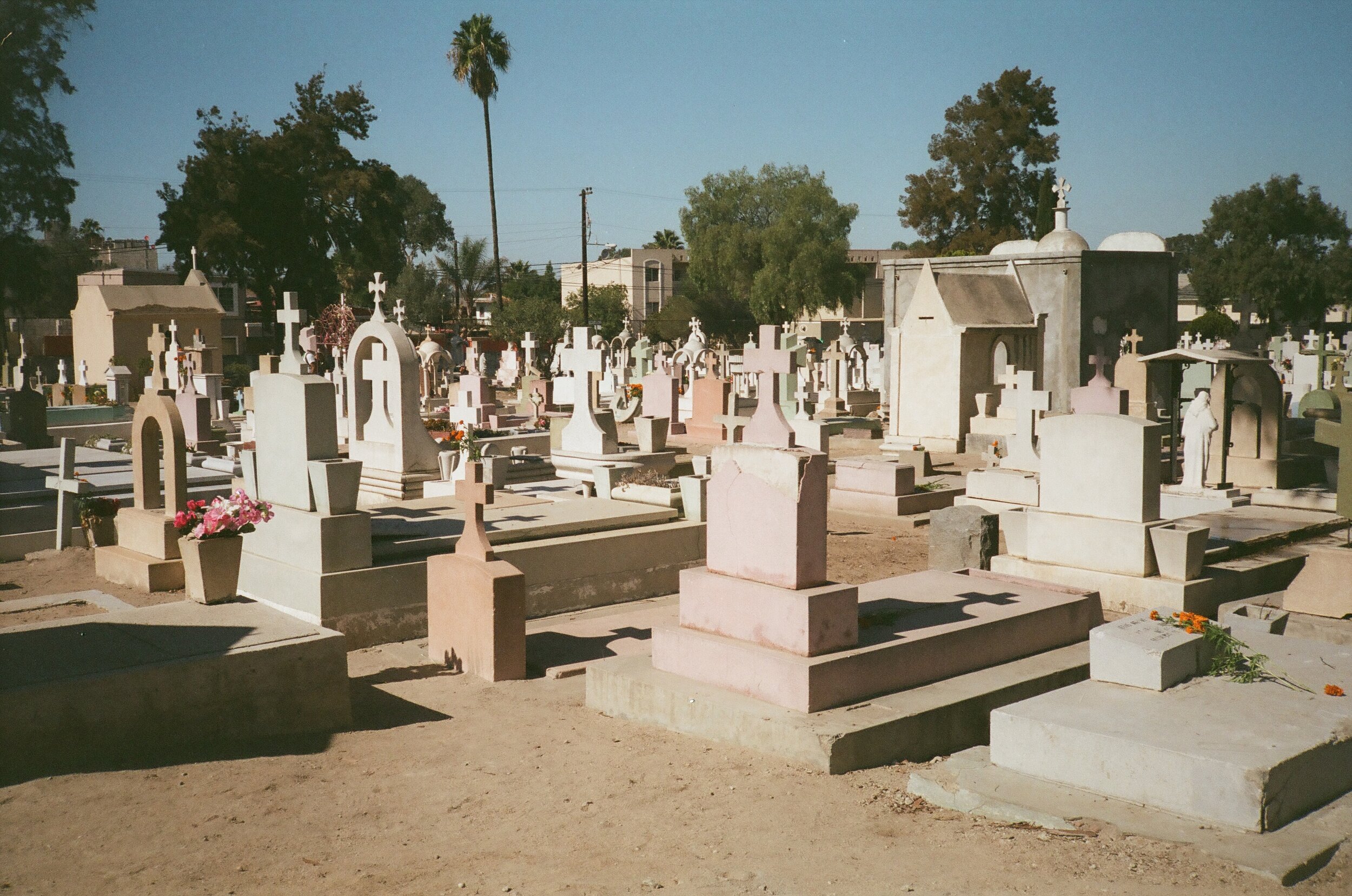Juan Soldado
During the Trump administration, the border territories of the US and Mexico were a point of great conceptual tension. Why is it that there is so much animosity by way of certain US citizens around this symbolic border? Why do some wish so vehemently to materialize it?
The US territories that border Mexico are, respectively, very new constituents of the US: less than 200 years. Before their annexation, of course, they were Mexico. We do not hear much about this point within the debates regarding building “the wall”.
The western territories are some of the most beautiful landscapes in the entire world. Rich with resources, agriculture, and industry, California’s revenue nearly matched New York and Texas’ combined in 2019, far surpassing any other state in value. From Hollywood to the south and Silicon Valley to the north, entertainment and tech are two of the US’s most prized and in-demand exports. By measure of revenue alone, the US cherishes California.
Based on the fiscal value of the territories that were so recently Mexico, could it be that the US shoulders some kind of unconscious complex? Are there not underlying insecurities that the territories of which the US is so rewarded is of direct–and recent!–Mexican ancestry? The absence of discussion regarding this socio-historic point is a very clear and present skeleton-in-the-closet in regards to a balanced discourse on the current relationship between the US and Mexico.
Tensions such as “the wall” always remain heated among bordering countries, but in most cases, the tension usually points to its origin. Countries war over bordering territories for generations. Those generations, though, know what they are warring over. If they don’t know, then it is likely because millennia has obscured those origins of the conflict. How can this be the case between the US and Mexico, when California was Mexico less than 200 years? Does the US forget that fast? Maybe it does and for good reason.
The history of the US–especially the western territories–is not only recent, it is traumatic and hypocritical. Its most recent and publicly documented genocide was concurrent with the annexation of the Mexican territories of Alta California to the US. Before, during, and after the Civil War, the US government was campaigning a strategic move to build railroads westward in order to generate a financial boom, which entailed getting rid of anyone who stood in their way--namely the first nation, indigenous peoples who lived there. From the Yakima Wars in Washington, down to Modoc in Northern California, to the Bloody Island Massacre at Clearlake, to name just a few, on behalf of the US Government, the western territories were the site of some of the most ruthless, public, manipulative, genocidal, affronts, by a so-called “developed” state on record.
Founded upon such appalling cornerstones, the thriving culture (and industry) of the present western states would, arguably, demand a collective ability to repress the recent deplorable events of its past. But what happens when one represses something? A unique, corresponding complex develops; traditionally we need a scapegoat to blame for the inexplicable pain and guilt that we feel below the surface. Too overwhelming to address the true victims of our guilt, the first nations and indigenous peoples of the US, we instead point the finger at our neighbor, a convenient locus of dormant resentment and jealousy, Mexico.
Breaking records at the oscars, and boasting a music and visual art scene rivaling that of Berlin, Tokyo, or New York, Mexico is an unexpected candidate as being the coolest country in the world right now. Is the US not jealous of that too? Take a drive across the border to Tijuana and you will instantly find cuisine and architecture that is more adventuresome, innovative, and soulful than any corporate subsidized venture in Echo Park or Brooklyn.
As you may know, exciting things do not occur on the poles, they occur in between by those who exist there, strong enough to hold the tension. Juan Soldado is a martyr, a mythic figure, who occupies the bardo between the US and Mexico. He is an aid to those in need, and above that alone, a figure anyone may turn to in order to understand the metaxy in themselves that the Ancient Greeks called the Khôra. In this time, more than ever, we need to look to spiritual messengers such as Soldado, to shuttle us between the poles in order to evade fundamentalist, destructive immature attitudes such as Proud Boys or Antifa, rampant throughout our culture right now. The Khôra is the bardo in which true creativity thrives in which we call upon Juan Soldado to provide us with the mercurial insights we desire in order to live more authentically.
Stationed in Tijuana, Juan Castillo Morales was a young cadet of the Mexican Army between the time of the two world wars. Falsely accused of a vicious crime, Morales, later to be immortalized as Juan Soldado, was sentenced by the mob to ley de fega, a draconian form of summary execution where the perpetrator is given an amount of time to flee after which the firing squad commences shooting. Staged at the border in Tijuana, Soldado failed to escape to California and was shot to death. Legend has it, supernatural occurrences were common at the site of Soldado’s execution, blood effervescing from the soil, and other miraculous incidents. Not long after Soldado’s untimely and tragic passing, a superior in the army was accurately identified as the true assailant–having framed Morale of the original crime–and brought to justice.
A mercurial figure in the style of Hermes or Coyote, Soldado behaves as a saint, by way of his martyrdom, providing spiritual or material transport to those in need. We work with Soldado as a gatekeeper to the land and terroir of California itself. Keeper of California, Soldado is a figure we have found great reward from our offerings, providing our ventures with benevolent insight and guidance. Working with the soils of California and that which lies beneath, by the grace of Soldado’s stewardship, we navigate the numinous Khôra spaces between the soil, plants and spirits. In appreciation, brandishing Soledado’s likeness on our labels is the least we can do in return.
We ask, that if you have made it this far in this boon about Juan Soldado, please visualize the story and feeling evoked as you read and in an intoxicated meditation, or with a proclamation of gratitude, pour some of the cider on to the ground for Soldado’s martyriship. Vesta & Here’s how!
Photos by Bardos during offerings for the hermetic saint, Juan Soldado, at Puerta Blanca Cemetary, Tijuana, Baja California Sur, B.C.S.
This post is written in acknowledgment and the utmost respect for the Kumeyaay lands and first nation people who steward the land now divided by government borders.









